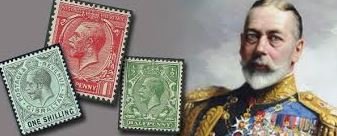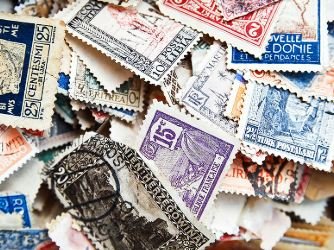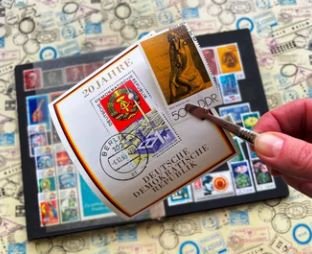Stamp collecting is a fascinating and rewarding hobby that can bring joy for a lifetime. Whether you’re interested in collecting stamps for their historical significance, artistic beauty, or investment potential, starting a stamp collection is an exciting journey. However, many beginners make the mistake of diving in without proper guidance, which can lead to wasted resources and frustration. In this article, we’ll explore how to start a stamp collection the right way—helping you build a rewarding hobby while avoiding common pitfalls.

1. Understanding the Basics of Stamp Collecting
Before you begin your collection, it’s essential to understand the fundamentals of stamp collecting. The world of philately (the study of stamps) is rich in history, culture, and intricacies. When you learn the basics, you set yourself up for success, ensuring that your collection is meaningful, valuable, and fun.
To truly understand how to start a stamp collection with confidence, you’ll need to familiarize yourself with the following key areas:
- Types of Stamps: There are various types of stamps you can collect, including commemorative stamps, definitive stamps, and airmail stamps. Commemorative stamps typically mark historical events or notable figures, while definitive stamps are regularly issued and used for general postal purposes.
- Condition Matters: The condition of a stamp plays a critical role in its value. A stamp in mint condition (unused) will often be worth more than a used stamp. It’s important to learn how to grade stamps and understand how wear, creases, and cancellations affect value.
By focusing on these basics, you’ll be well on your way to learning how to start a stamp collection the right way—setting a solid foundation for your growing collection.
2. Deciding on Your Focus Area
When thinking about how to start a stamp collection, one of the first decisions you’ll need to make is what area of stamp collecting interests you the most. Stamp collecting can be as broad or as niche as you like. Some collectors focus on:
- Country-specific collections: Collecting stamps from a particular country or region can give your collection focus and direction.
- Topical collections: Collecting stamps related to a specific theme, such as animals, sports, or famous leaders.
- Era-specific collections: Some collectors focus on stamps from a particular time period, like the Victorian era or stamps from a certain century.
By narrowing your focus, you can start your collection with intention, making it easier to build a cohesive, valuable collection over time. This also prevents you from wasting resources on stamps that don’t align with your interests. Instead, you’ll learn how to start a stamp collection in a way that aligns with your passions.
3. Establishing a Budget
Starting a stamp collection can be as inexpensive or as expensive as you want it to be. It’s important to set a budget early on to avoid overspending. Some stamps are extremely rare and can be costly, while others are affordable and more accessible to beginners.
When you learn how to start a stamp collection, consider these points:
- Start Small: Initially, it’s better to focus on less expensive stamps and gradually build your collection. You can always upgrade to more valuable stamps as you gain experience and knowledge.
- Set Priorities: If you’re collecting stamps based on a theme, such as animals or historical events, you can focus on buying common stamps from that theme and gradually move to rarer finds as your collection grows.
- Avoid Overpaying: Many new collectors fall into the trap of paying too much for stamps simply because they’re rare or old. Use resources such as stamp catalogs or online price guides to avoid spending more than a stamp is worth.
A clear budget will help you stay on track and ensure you’re not wasting resources as you begin your journey into how to start a stamp collection. This approach will keep your hobby rewarding and prevent you from getting discouraged by overspending.
4. Building the Right Tools and Resources
As with any hobby, having the right tools can make a big difference. When learning how to start a stamp collection, there are several essential tools you’ll need to organize and protect your stamps:
- Stamp Album or Binder: To properly store your stamps, invest in a good-quality stamp album or binder with clear plastic pockets. This will help you organize and protect your stamps from damage and wear.
- Tweezers: A pair of fine-point tweezers is essential for handling stamps without damaging them with your fingers. It will help you avoid accidentally tearing or bending your stamps.
- Magnifying Glass: A magnifying glass will help you examine the details of your stamps, which is especially important when evaluating their condition and authenticity.
- Stamp Catalogs: A stamp catalog is a vital resource to help you identify stamps, track their value, and learn more about the history behind each piece. Many collectors rely on these catalogs to guide their collections and ensure they’re building a valuable and accurate inventory.
Investing in these tools early will make it easier for you to organize and care for your collection, ensuring that you avoid any mistakes or waste of resources as you learn how to start a stamp collection.
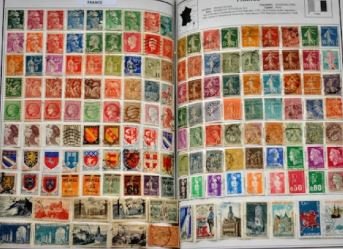
5. Where to Buy Stamps
When you’re starting out, it’s essential to know where to buy stamps. Understanding the best places to buy collectible stamps will ensure you’re not wasting your time or money on unreliable sources. Some great places to begin purchasing stamps include:
- Reputable Dealers: Buying from trusted stamp dealers guarantees that you’ll get authentic and high-quality stamps. Look for dealers who have been in the business for a long time and are known for their reliability.
- Online Marketplaces: Websites like eBay and Delcampe are popular places for buying stamps, but it’s important to carefully review the seller’s ratings and feedback. Be cautious of buying from unknown sellers to avoid potential fraud or overpriced stamps.
- Stamp Shows and Exhibitions: These events are great for discovering rare stamps and meeting knowledgeable collectors. It’s also an opportunity to see stamps up close and learn more about their value from experts.
As you learn how to start a stamp collection, remember that not all sellers are reliable. Choose sellers and platforms that have a good reputation to avoid wasting resources on counterfeit or overpriced stamps.
6. Avoiding Common Mistakes
In your pursuit of how to start a stamp collection, it’s important to avoid common mistakes that can hinder your progress and waste resources:
- Buying Without Researching: One of the easiest ways to waste resources is by buying stamps without doing adequate research. Ensure that you’re getting good value by checking stamp catalogs and online guides.
- Overcollecting Early On: Beginners often try to collect too many stamps at once. Instead of building a collection based on impulse, focus on quality and rarity. You can always expand later as you learn more about the hobby.
- Neglecting Stamp Care: Proper care and storage are essential to maintain the value of your collection. Be sure to protect your stamps from environmental damage like sunlight, moisture, and rough handling.
By learning how to start a stamp collection properly and avoiding these mistakes, you can ensure that your hobby remains enjoyable and rewarding.
7. Enjoying the Journey
Stamp collecting is a hobby that rewards patience and knowledge. As you build your collection, you’ll likely encounter stamps with fascinating stories, intricate designs, and historical significance. Whether you’re interested in rare finds or just the joy of collecting, remember that the journey is as important as the destination.
Learning how to start a stamp collection is about more than just amassing stamps; it’s about appreciating the beauty, history, and value behind each piece. As your collection grows, you’ll develop a deeper understanding of the stamps you collect and the history they represent.
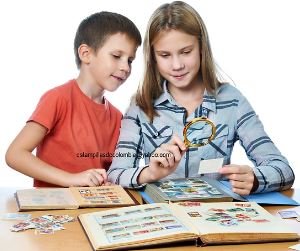
Conclusion
Starting a stamp collection is a fantastic way to engage with history, art, and culture while enjoying a rewarding hobby. By focusing on what truly interests you, setting a budget, using the right tools, and avoiding common mistakes, you’ll be well on your way to building a meaningful and valuable collection. Follow these tips to learn how to start a stamp collection the right way, and you’ll avoid wasting resources while making the most of this fascinating hobby.

